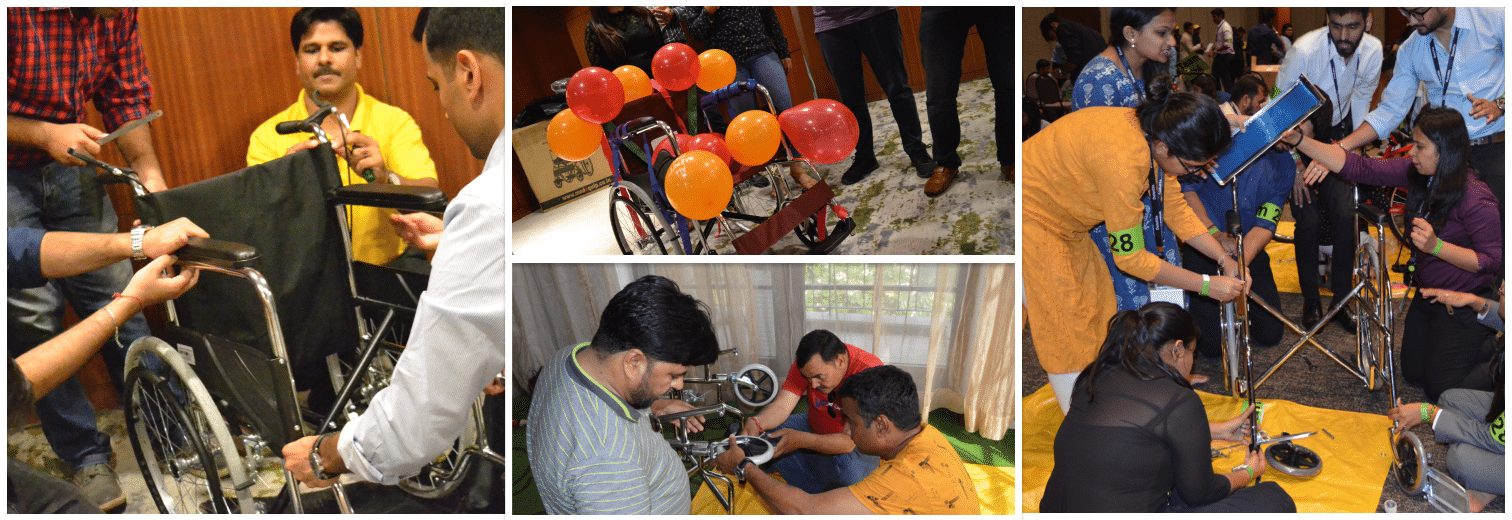If you lead, manage, or work in a team, you already know: teamwork sounds easy but is incredibly rare. A leadership fable by Patrick Lencioni, The Five Dysfunctions of a Team, tackles this very question: while teamwork is the ultimate competitive advantage, why is it so rare?
“Teamwork is not a virtue, it’s a choice. You have to decide whether you want to be a team or not and accept the sacrifices and the cost it entails. Ultimately, it comes down to mastering some simple concepts that you probably already know, but the hard part is doing them every day, day in and day out. It’s a discipline of mastering some simple things.”
“If you could get all the people in an organization rowing in the same direction, you could dominate any industry, in any market, against any competition, at any time.”
To get people aligned and rowing in the same direction requires leaders to address the following five dysfunctions of a team.
The Enduring Power of Teamwork
Table of Contents
Lencioni starts with a bold claim: “Teamwork is the ultimate competitive advantage – because it is so powerful, and so rare.”
We see this every day. When teams work, magic happens: people step up, innovation thrives, and business results follow. But dysfunctional teams? They sap energy, create frustration, and leave talent untapped.
Why is true teamwork so rare?
In our experience, it’s because:
- “Teamwork” has become a buzzword. Many organizations pay lip service, but few make the daily effort it requires.
- The hard work of building trust and dealing with conflict is often avoided in favor of comfort or speed.
- Teams underestimate how much alignment, honesty, and shared vulnerability are required.
As Lencioni says, “It’s a choice, not a virtue.” Teams have to decide, every day, to do the work.
The Five Dysfunctions – And Why They Matter
This is why Patrick Lencioni’s The Five Dysfunctions of a Team remains a staple for leaders and HR professionals worldwide. Years after its publication, the lessons ring true – perhaps more so today, as remote work, generational diversity, and organizational change test our teams like never before.
In this post, we visit Lencioni’s book, share our lived experience of seeing these dysfunctions play out in organizations, and offer practical ways you can move your team from good to great. Whether you’re a CHRO, a manager, or an L&D professional, there’s something here for you.
Dysfunction 1: Absence of Trust
Lencioni is not referring to the ability to predict how someone will act because you’ve known them for years. The kind of trust he’s talking about is vulnerability-based trust—the ability of group members to show weakness, ask for help, and be open with each other.
Teams that lack this kind of trust:
- Conceal weaknesses and mistakes
- Hesitate to ask for help or give constructive feedback
- Avoid offering help outside their own areas
- Jump to conclusions about others’ intentions
- Fail to recognize and use one another’s strengths
- Waste time managing appearances
- Hold grudges
- Find reasons to avoid spending time together
How do you build trust?
Shared experiences, consistent follow-through, and integrity are key. In the fable, the team completes a Myers-Briggs assessment to get conversations going about strengths and weaknesses, making vulnerability safe.
Leadership’s Role:
The leader must go first – modeling vulnerability, admitting mistakes, and inviting openness. Building trust is the foundation for healthy conflict.
Dysfunction 2: Fear of Conflict
“The teams that have regular conflict around issues are the same ones that don’t have conflict around character, because they have said everything that needs to be said – there is no oxygen for back channel politics.”
Lencioni emphasizes productive, ideological conflict: passionate, unfiltered debate about important issues. Most teams avoid this, opting for artificial harmony.
We often wear masks, prioritizing niceness over honesty. The worst teams are those of “yes men.” Teams that fear conflict:
- Have boring meetings
- Enable back-channel politics and personal attacks
- Ignore important, controversial topics
- Fail to use all perspectives available
- Waste time with posturing
Real, sometimes uncomfortable, debate is necessary for the best decisions.
Dysfunction 3: Lack of Commitment
When teams engage in productive conflict, they gain the clarity and buy-in needed for real commitment. Commitment is a function of both clarity and buy-in.
Teams that fail to commit:
- Create ambiguity about direction and priorities
- Miss opportunities due to analysis paralysis
- Breed lack of confidence and fear of failure
- Revisit decisions endlessly
- Encourage second-guessing
“If they don’t weigh in, they won’t buy in.”
Leaders can help by reviewing key decisions, clarifying responsibilities, and setting deadlines.
Dysfunction 4: Avoidance of Accountability
Without commitment, there is no accountability. For teams to hold each other accountable, everyone must clearly understand what’s expected.
Teams that avoid accountability:
- Create resentment among members with different performance standards
- Encourage mediocrity
- Miss deadlines and deliverables
- Place too much burden on the leader for discipline
Ambiguity is the enemy. Make standards, tasks, and ownership clear.
Dysfunction 5: Inattention to Results
When accountability is missing, people prioritize personal goals over team results. Healthy teams put the collective results first.
Teams that lack focus on results:
- Rarely defeat competitors
- Lose achievement-oriented employees
- Encourage focus on individual goals
- Get distracted easily
- Stagnate and fail to grow
Result-oriented teams commit early, measure success, and review progress together.
Real-World Applications: Bringing “5 Dysfunctions” to Life
In our experience, working with teams on these dysfunctions is transformative. For example, we’ve seen a finance team go from hiding mistakes to weekly “failure sharing” meetings – radically improving trust and problem-solving.
A leadership team at a manufacturing client learned to stop post-meeting grumbling by scheduling “conflict time” before decisions. The result? Faster decisions, greater innovation, and a happier team.
The L&D Perspective: Why Every HR Leader Should Care
If you’re responsible for developing leaders, you can’t afford to ignore team dynamics. Dysfunctional teams drive turnover, disengagement, and underperformance – often quietly, until it’s too late.
Practical actions for L&D:
- Integrate “5 Dysfunctions” workshops into leadership programs.
- Use self-assessment and feedback tools to gauge team health.
- Coach leaders on modeling vulnerability and building trust.
- Address conflict avoidance in team coaching sessions.
Key Takeaways for Teams and Leaders
- Teamwork is built, not given. It takes daily, deliberate effort.
- Every team has dysfunctions – the key is to talk about them openly.
- Leaders must model vulnerability and healthy conflict.
- Commitment, accountability, and results are shared responsibilities.
Final Word: Teamwork as a Journey
At FocusU, we’ve seen first-hand: teams don’t become high-performing overnight. But with intention, honesty, and a willingness to address what’s really holding you back, any team can grow.
So next time your team hits a roadblock, ask: Which dysfunction might be at play here? And what small step could we take – today – to move forward, together?
Do you have a team story or challenge? We’d love to hear your experiences in the comments.
Also Read: FocusU is an authorised partner for The Five Behaviors®





